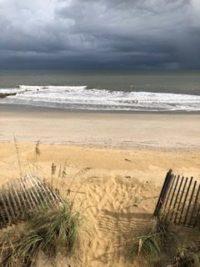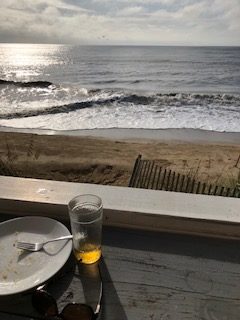All of my books use real settings in the state of South Carolina. I can honestly say that the locations have done more to sell my books than anything else.

SC settings like Edisto Island, Charleston, Chapin, Pelion, Walterboro, and Newberry can be found in my stories. Readers say, hey, I’ve been there, and they buy, wanting to revisit that place, or insert themselves into the familiar. In terms of Edisto Island, people have vacationed there, fallen in love with it, and while they can’t return anytime soon, they can at least revisit in a story.
The Edisto Bookstore sold 1000+ copies last year and almost double that this year. People wanted to take Edisto home with them, or they were new to the area and wanted fiction that sank them into the parts they didn’t know.
Some ask me how I get away with using real places in fiction. I have several tips for this:
1) Be accurate in the setting.
2) Don’t paint a negative light on a real commercial venue.
3) Use multiple real aspects of the setting from street names to businesses, from weather to economy, from culture to demographics.
4) Don’t use real people, or the semblance of real people, without their permission.
5) Understand the real-life issues and history of the community.

For instance, on Edisto Island, I use real streets like Myrtle, Palmetto, and Jungle Road. Real marshes and waterways like Scotts Creek and Big Bay Creek. I use real restaurants like Whaley’s, McConkey’s, and Ella and Ollie’s. I use the real police station and the Pavilion on the Atlantic’s edge.
However, I only use one person who is close to being real, and I got her permission to use her likeness. Everyone else is pure fiction. Not everyone wants their image in a book, especially if they do anything wrong. However, there has to be a mayor, police officers, a town council, real estate agents, and restaurant owners. It’s a tourist beach community. However, the real people holding these jobs on Edisto hold no similarity to the ones in the books. As a matter of fact, the police chief has changed five times since I’ve written these books, and the mayor three times. A few of these people have been staunch fans.
But regardless the place, you must capitalize on a setting’s uniqueness. What makes it more than any other city, any other community, any other tourist locale, or yet another beach? The setting has to feel like a character and has to be a serious draw for readers. To nail a setting is to snare more readers, those who picked up the book solely because of where it is located.
More on writing setting:
https://www.writersdigest.com/write-better-fiction/8-tips-for-creating-believable-fictional-towns
https://blog.reedsy.com/setting-of-a-story/
https://writersedit.com/fiction-writing/7-tips-writing-realistic-settings/
Leave a Reply